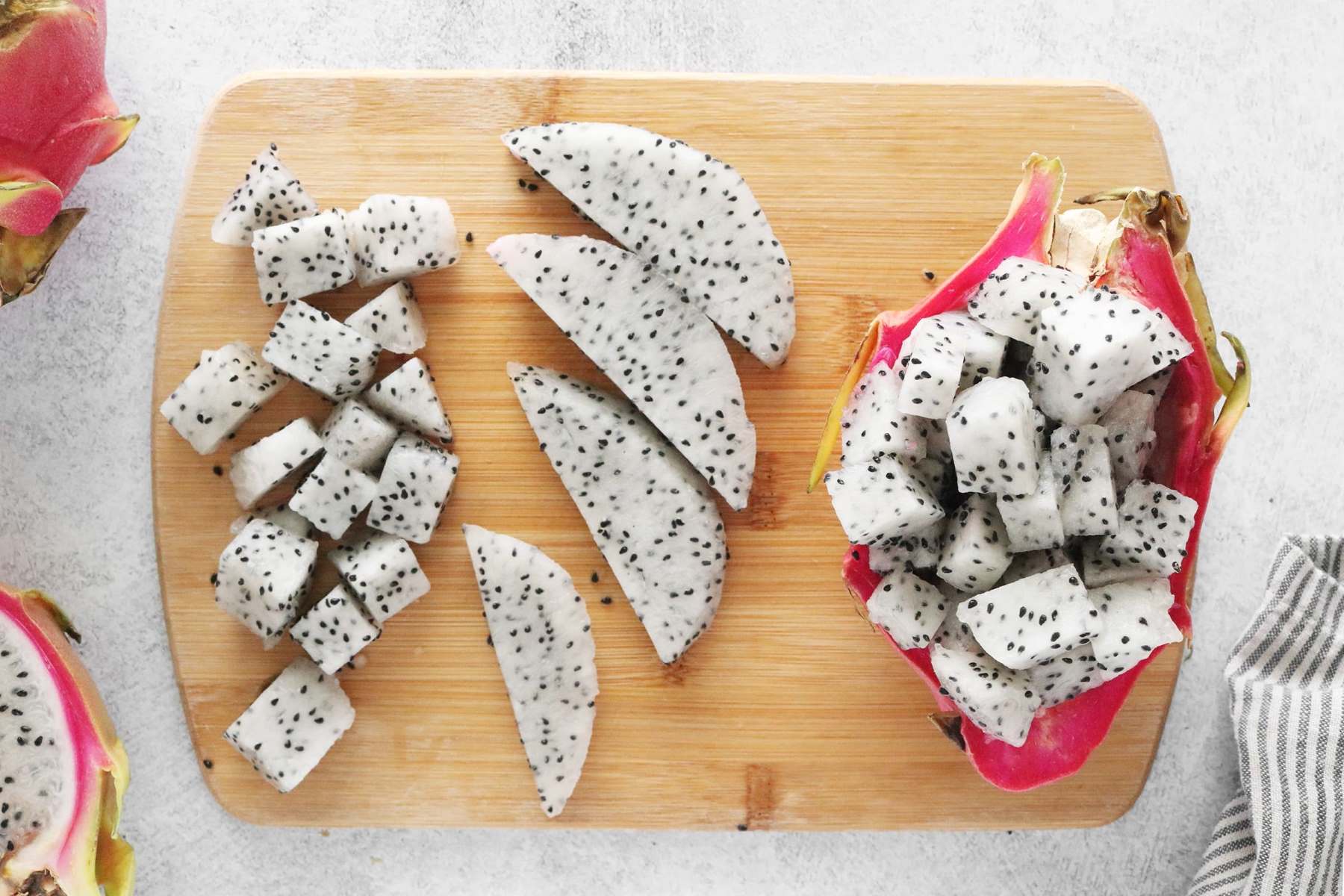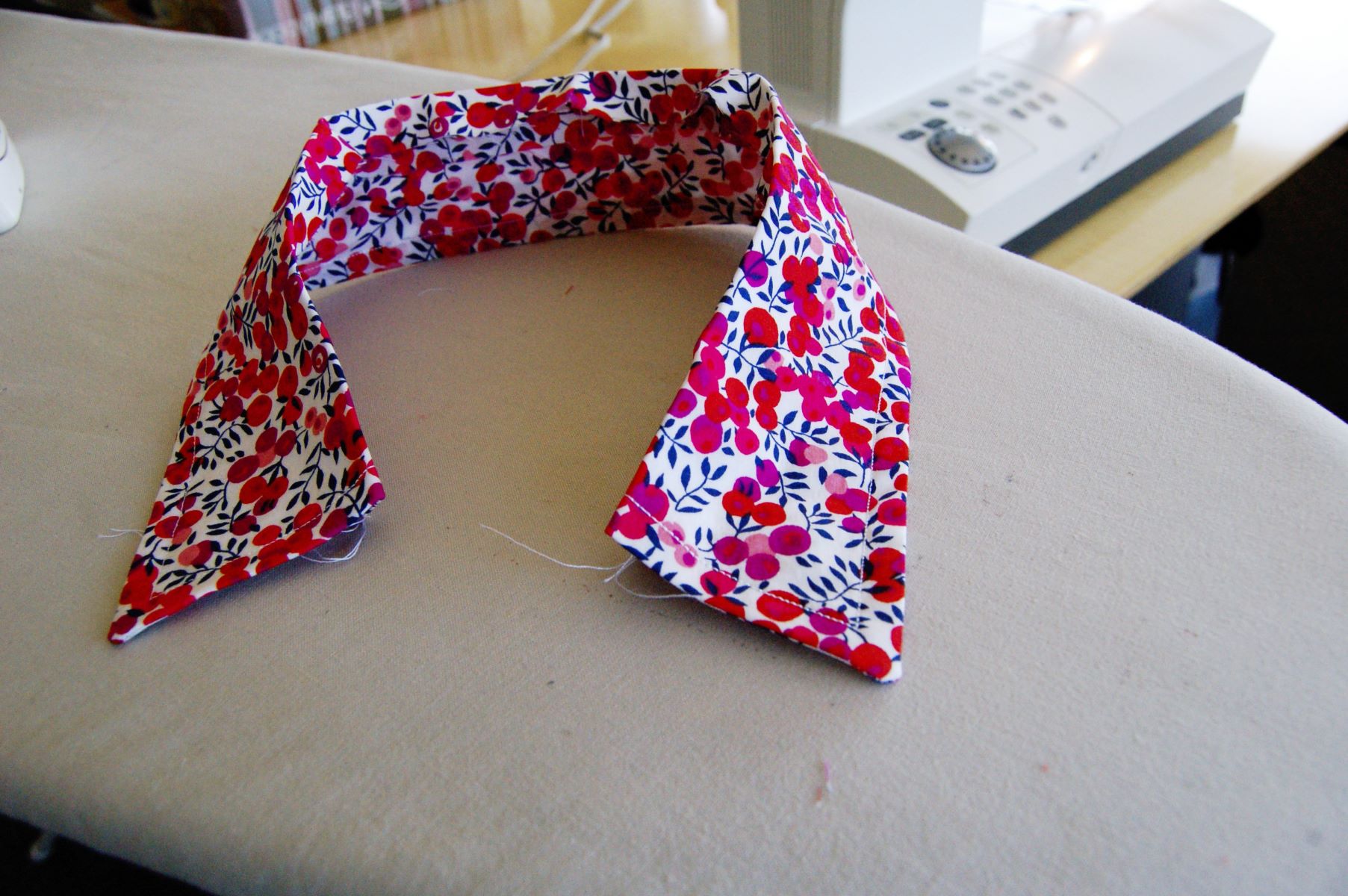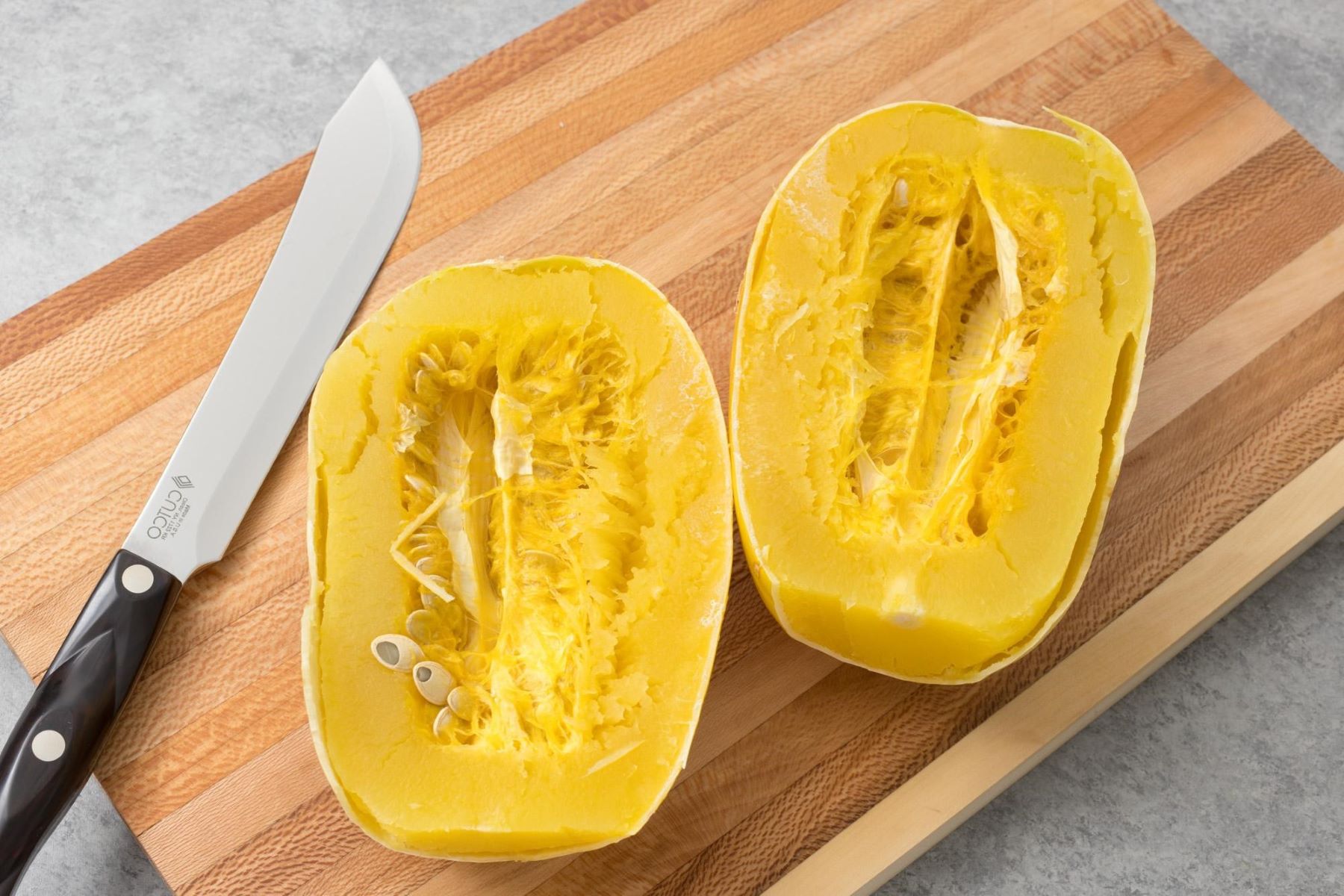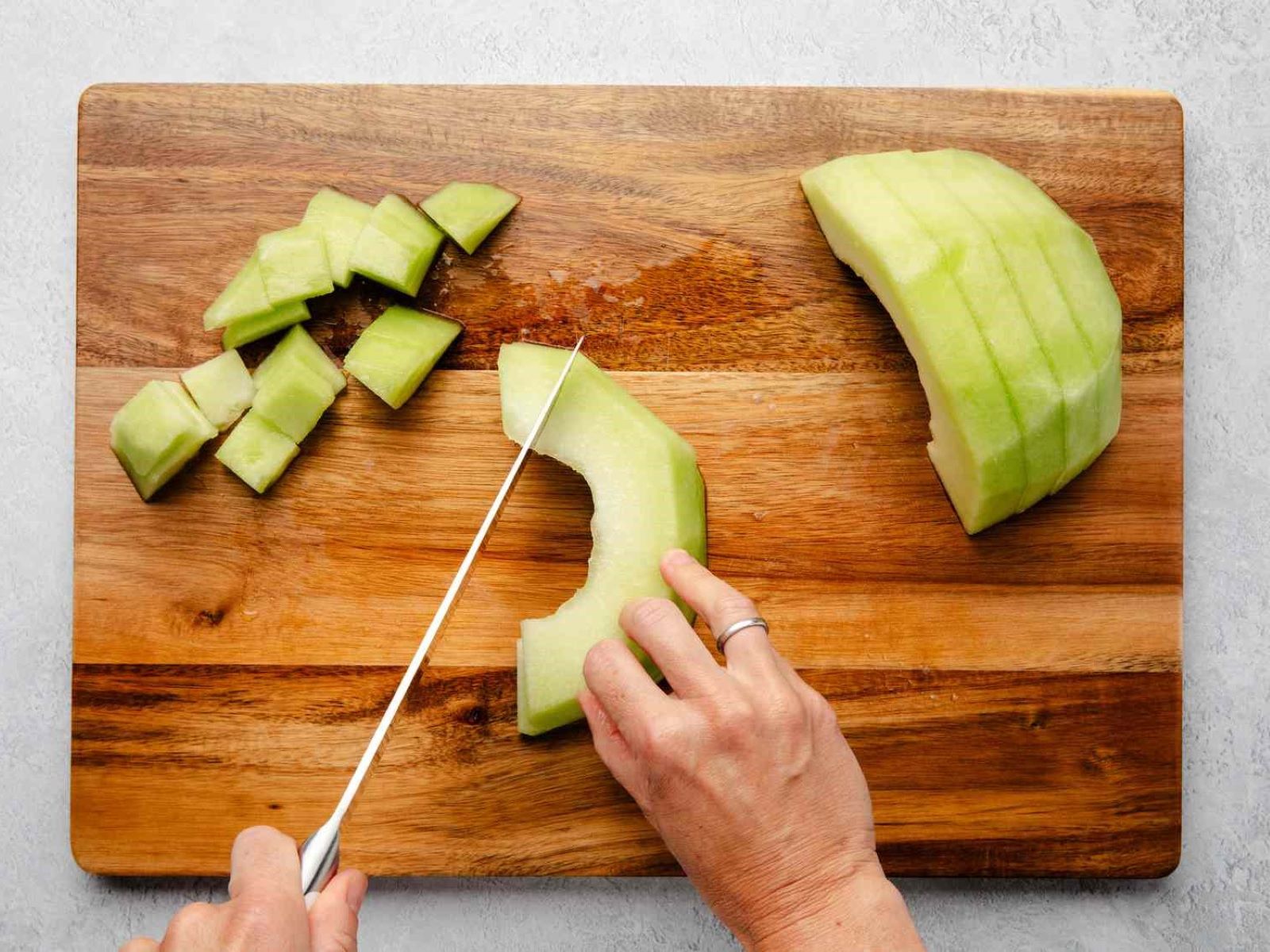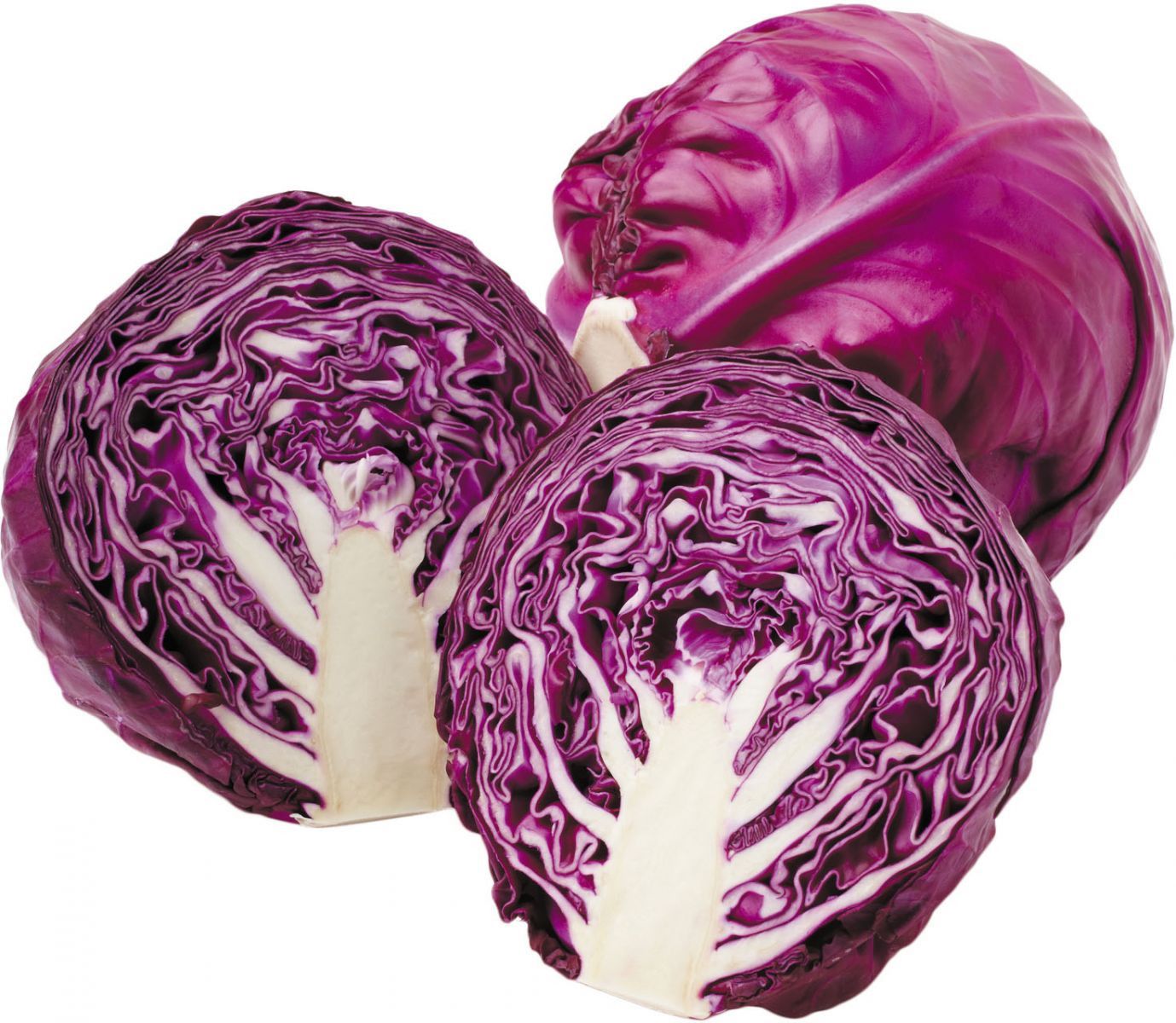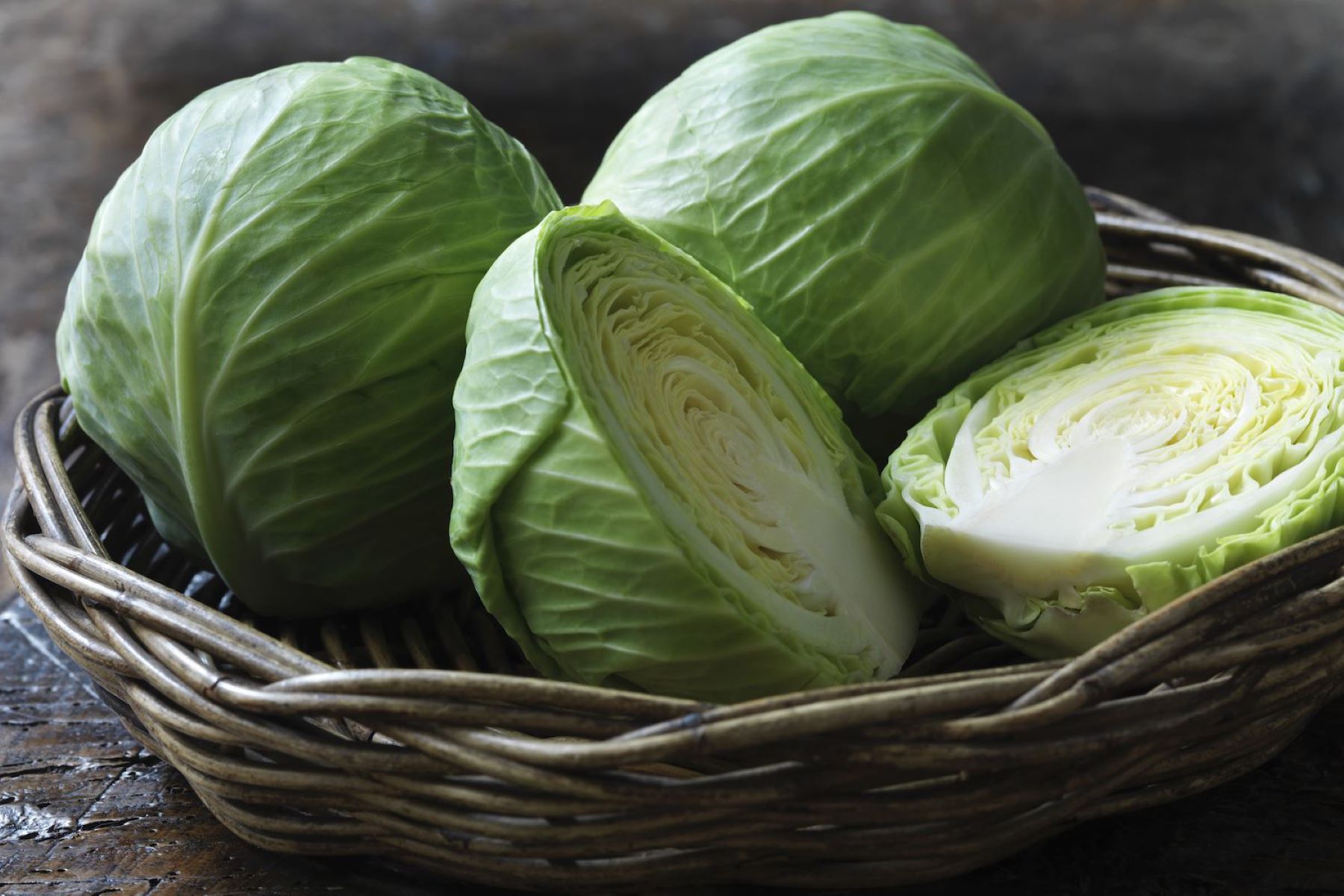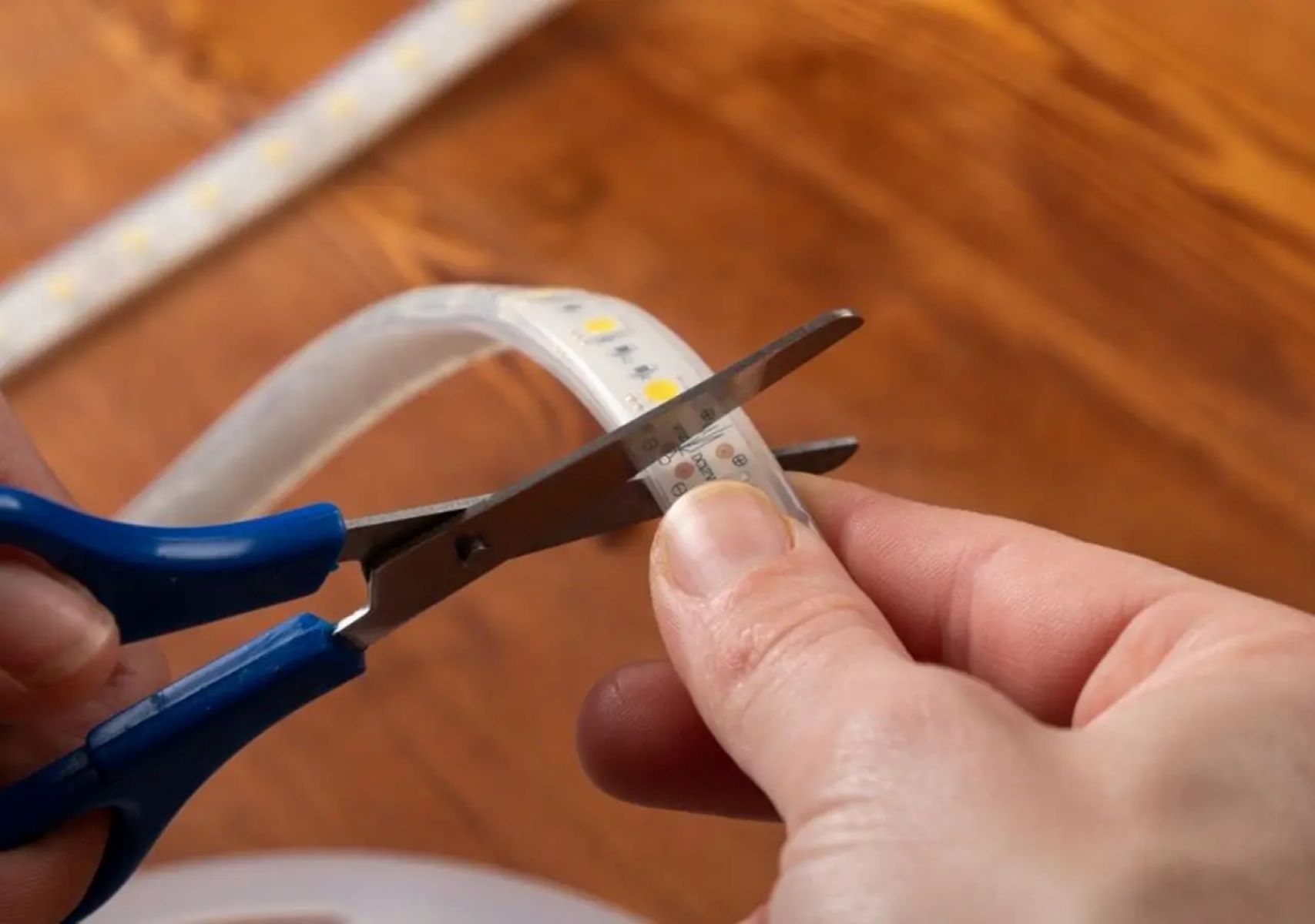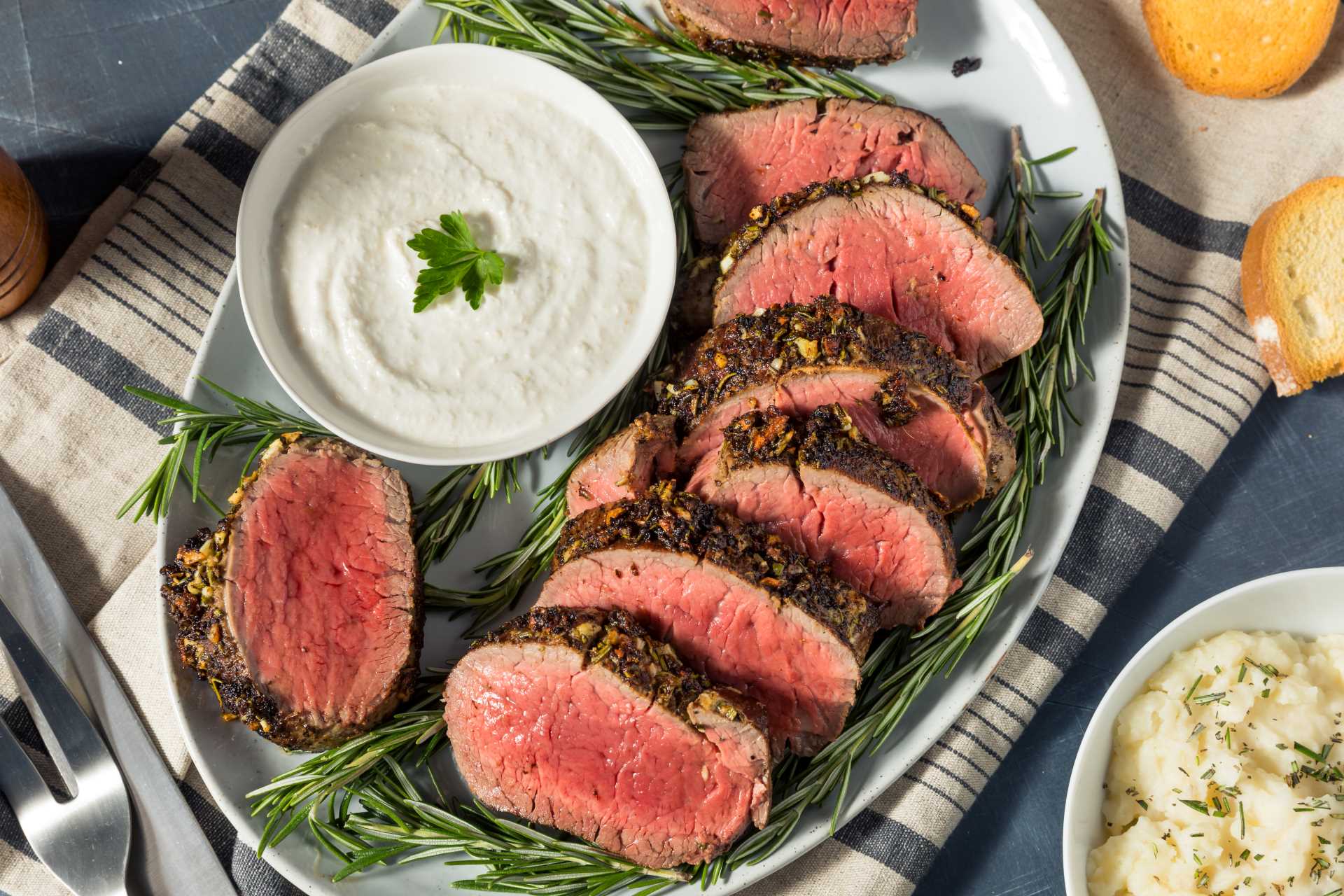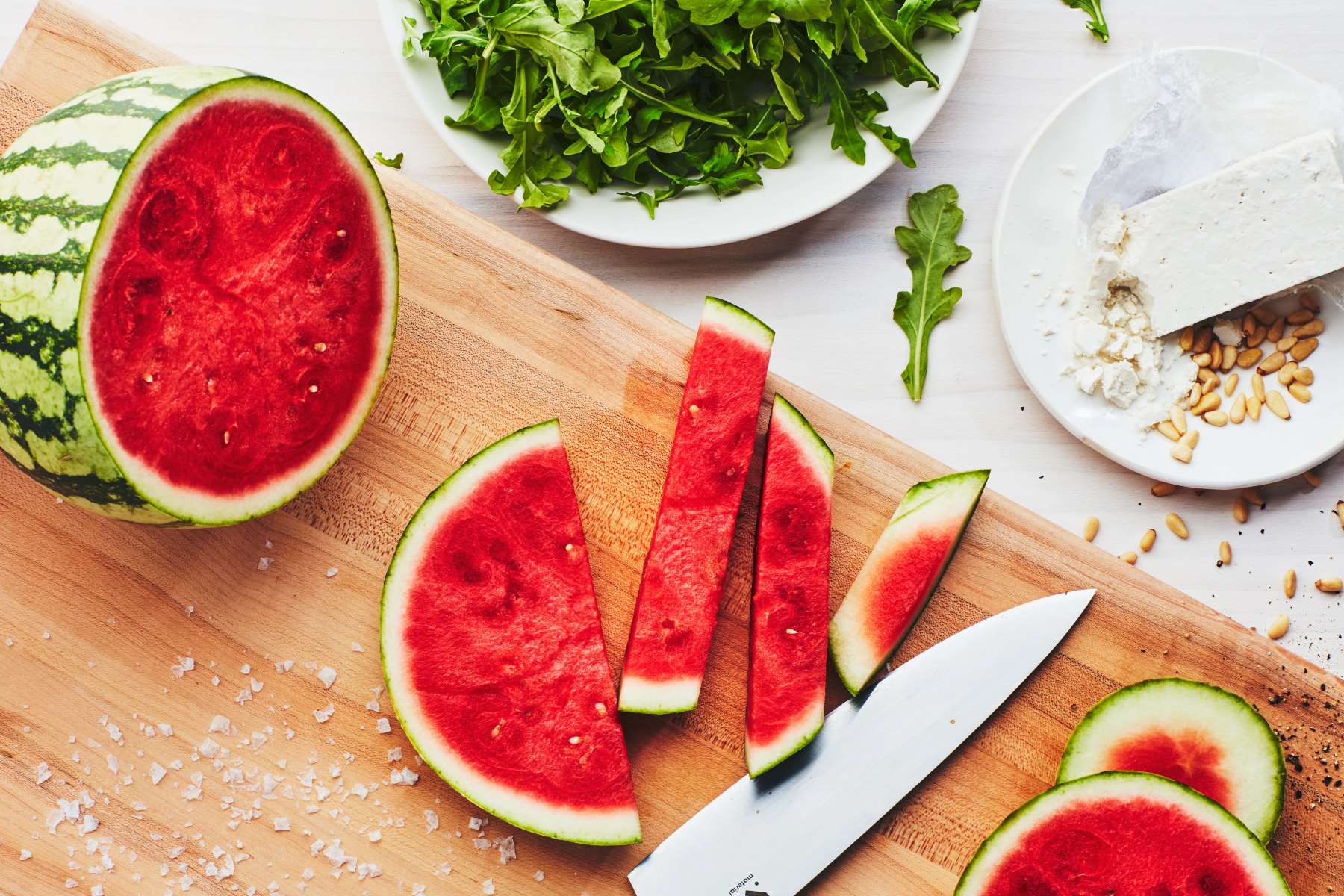Home>Food and Cooking>How To Cut Cabbage
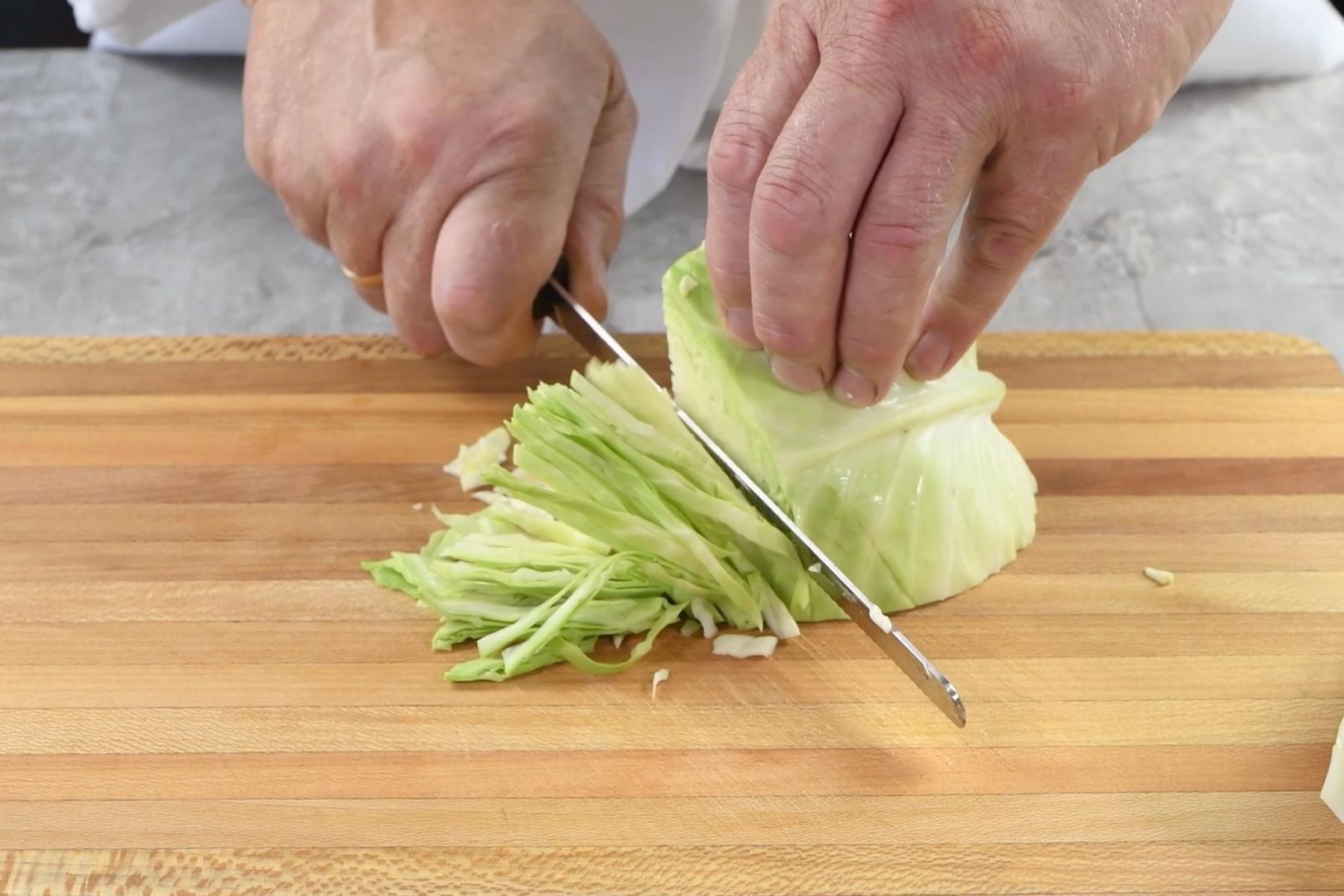

Food and Cooking
How To Cut Cabbage
Published: March 5, 2024
Learn the best techniques for cutting cabbage with our step-by-step guide. Discover expert tips for preparing this versatile vegetable for your favorite recipes. Perfect for food and cooking enthusiasts!
(Many of the links in this article redirect to a specific reviewed product. Your purchase of these products through affiliate links helps to generate commission for Regretless.com, at no extra cost. Learn more)
Table of Contents
Introduction
Cutting cabbage is a fundamental skill in the kitchen that opens up a world of culinary possibilities. Whether you're preparing a crisp coleslaw, a hearty stir-fry, or a comforting bowl of cabbage soup, knowing how to cut this versatile vegetable is essential. Mastering the art of cutting cabbage not only enhances the visual appeal of your dishes but also ensures even cooking and optimal flavor infusion.
In this comprehensive guide, we will explore the step-by-step process of cutting cabbage with precision and efficiency. From gathering the necessary tools and ingredients to storing or using the cut cabbage, each step is crucial in achieving the desired results. By following these instructions, you will gain the confidence to tackle any recipe that calls for this nutritious and flavorful vegetable.
So, roll up your sleeves, sharpen your knife, and let's embark on a journey to unlock the potential of cabbage in your culinary creations. Whether you're a seasoned home cook or a novice in the kitchen, this guide will equip you with the knowledge and skills to elevate your cooking prowess. Let's dive in and discover the art of cutting cabbage!
Read more: How To Cut A Peach
Step 1: Gather the necessary tools and ingredients
Before embarking on the process of cutting cabbage, it's essential to gather the right tools and ingredients to ensure a seamless and efficient preparation. Here's what you'll need:
Tools:
- Chef's Knife: A sharp, sturdy chef's knife is the cornerstone of cabbage cutting. Opt for a knife with a comfortable grip and a long, broad blade to facilitate smooth, controlled cuts.
- Cutting Board: Choose a spacious, stable cutting board that provides ample room for maneuvering the cabbage while protecting your countertop.
- Kitchen Towel or Paper Towels: Having a kitchen towel or paper towels on hand is useful for drying the cabbage leaves after washing, ensuring a clean and safe cutting surface.
- Bowl or Container: A bowl or container will come in handy for collecting the cut cabbage, keeping it organized and ready for use in your culinary creations.
Ingredients:
- Fresh Cabbage: Select a firm, compact cabbage head with crisp, vibrant leaves. Whether you opt for green, red, or savoy cabbage, choose one that feels heavy for its size, indicating freshness.
- Optional: Salt and Vinegar: Depending on your recipe, you may need salt and vinegar to season or preserve the cut cabbage. These ingredients can enhance the flavor and texture of the cabbage in various dishes.
By assembling these essential tools and ingredients, you'll set the stage for a successful cabbage-cutting endeavor. With the right equipment at your disposal, you'll be well-prepared to proceed to the next steps with confidence and precision.
Step 2: Remove the outer leaves and core of the cabbage
To begin the cabbage-cutting process, it's crucial to properly prepare the cabbage head by removing the tough outer leaves and core. This step ensures that the resulting cuts are clean, uniform, and free from any undesirable elements. Follow these detailed instructions to expertly remove the outer leaves and core of the cabbage:
-
Inspect the Cabbage: Place the cabbage head on the cutting board and visually inspect it for any damaged or wilted outer leaves. Gently press on the head to check for firmness, indicating freshness.
-
Remove the Outer Leaves: Start by peeling away the outer leaves of the cabbage. These leaves are often tougher and may have accumulated dirt or blemishes. Carefully peel them off one by one, working your way around the cabbage until you reach the inner leaves that appear crisp and clean.
-
Trim the Stem End: Once the tough outer leaves have been removed, it's time to address the core. Using a sharp chef's knife, carefully trim the stem end of the cabbage to create a flat, stable base for further cutting.
-
Cut the Cabbage in Half: With the stem end trimmed, proceed to cut the cabbage in half from top to bottom, creating two equal halves. This step exposes the core, making it easier to remove.
-
Remove the Core: Position one of the cabbage halves with the cut side facing down on the cutting board. Make a diagonal incision to remove the core, cutting from the base of the stem end towards the tip of the cabbage. Repeat this process for the other half.
By meticulously following these steps, you will effectively eliminate any undesirable outer leaves and tough core, leaving you with a pristine cabbage ready for the next phase of cutting. This meticulous preparation sets the stage for seamless and precise slicing, ensuring that the resulting pieces are fresh, clean, and ideal for a wide range of culinary applications.
Read more: How To Cut Metal Roofing
Step 3: Slice the cabbage into desired shape and size
After preparing the cabbage by removing the outer leaves and core, it's time to slice it into the desired shape and size. This step is crucial as it determines the texture and presentation of the cabbage in your culinary creations. Whether you prefer finely shredded cabbage for coleslaw, thin slices for stir-fries, or chunky pieces for soups and stews, the slicing technique plays a pivotal role in achieving the desired outcome.
Here's a detailed guide on how to slice the cabbage into various shapes and sizes:
Shredded Cabbage:
- Position the Cabbage Halves: Place one of the cabbage halves flat side down on the cutting board, providing a stable base for slicing.
- Create Thin Strips: Using a sharp chef's knife, carefully slice the cabbage crosswise to create thin, uniform strips. Maintain a steady grip on the cabbage to ensure consistent thickness throughout the shredding process.
- Adjust the Thickness: Depending on your recipe and personal preference, you can adjust the thickness of the strips. For a finer texture, make thinner cuts, while slightly thicker cuts are suitable for a more substantial crunch.
Sliced Cabbage:
- Stabilize the Cabbage: Place one of the cabbage halves flat side down on the cutting board, ensuring a secure position for slicing.
- Make Even Slices: With a smooth, controlled motion, slice the cabbage lengthwise to create even, elongated pieces. Aim for uniformity to promote even cooking and a visually appealing presentation.
- Explore Different Cuts: Experiment with varying the width of the slices to accommodate different recipes. Thin slices work well for quick stir-fries, while slightly thicker slices retain a satisfying crunch in salads and slaws.
Chunked Cabbage:
- Secure the Cabbage Halves: Place the cabbage halves flat side down on the cutting board, providing a stable foundation for cutting.
- Create Bite-Sized Pieces: Using a decisive cutting motion, divide the cabbage halves into bite-sized chunks. Ensure that the pieces are relatively uniform in size to promote even cooking and a harmonious texture in your dishes.
- Customize the Size: Tailor the size of the cabbage chunks to suit the specific requirements of your recipes. Larger chunks add substance to soups and braised dishes, while smaller pieces integrate seamlessly into stir-fries and casseroles.
By following these detailed instructions, you can expertly slice the cabbage into the desired shape and size, unlocking its culinary potential in a myriad of dishes. Whether you're aiming for delicate shreds, elegant slices, or hearty chunks, mastering the art of slicing cabbage empowers you to elevate the texture, flavor, and visual appeal of your culinary creations.
Read more: How To Cut After Bulking
Step 4: Store or use the cut cabbage
Once you have expertly cut the cabbage into your desired shape and size, it's essential to consider the next steps for either storing the cut cabbage for future use or incorporating it into your culinary creations immediately. Proper storage techniques and creative usage ideas can maximize the freshness and versatility of the cut cabbage, allowing you to seamlessly integrate this nutritious and flavorful ingredient into a wide range of dishes.
Storage Options:
Refrigeration:
After cutting the cabbage, if you have surplus portions that you won't be using right away, refrigeration is the key to preserving its freshness. Place the cut cabbage in an airtight container or resealable plastic bag, ensuring that excess air is removed to minimize oxidation. Properly stored, cut cabbage can remain fresh in the refrigerator for up to 3-4 days, ready to be utilized in salads, stir-fries, soups, or as a crunchy topping for tacos and sandwiches.
Freezing:
If you anticipate a longer duration before using the cut cabbage, freezing is an excellent preservation method. Before freezing, blanch the cut cabbage in boiling water for a brief period, followed by an ice water bath to halt the cooking process. Once cooled and drained, portion the blanched cabbage into freezer-safe bags or containers, removing excess air to prevent freezer burn. Frozen cut cabbage can maintain its quality for up to 10-12 months, offering a convenient supply for future culinary endeavors.
Creative Usage Ideas:
Coleslaw Creations:
Utilize the freshly cut cabbage to craft vibrant and refreshing coleslaw variations. Combine it with shredded carrots, a zesty dressing, and a sprinkle of herbs and nuts for a delightful side dish that complements grilled meats, sandwiches, and barbecue fare.
Stir-Fry Sensations:
Incorporate the cut cabbage into sizzling stir-fries, infusing your dishes with a satisfying crunch and a hint of sweetness. Pair it with an array of vegetables, protein sources, and savory sauces for a quick and nutritious meal that tantalizes the taste buds.
Nourishing Soups and Stews:
Add the cut cabbage to hearty soups and stews, imparting a subtle sweetness and a satisfying texture to the simmering concoctions. Whether in a classic minestrone, a comforting chicken soup, or a robust beef stew, the cabbage contributes depth and nutritional value to the dish.
By considering these storage options and creative usage ideas, you can make the most of the cut cabbage, ensuring that it remains a versatile and valuable ingredient in your culinary repertoire. Whether you opt to store it for future use or immediately incorporate it into a delectable dish, the cut cabbage stands ready to elevate your cooking endeavors with its fresh, vibrant presence.
Conclusion
In conclusion, mastering the art of cutting cabbage is a transformative skill that empowers home cooks and culinary enthusiasts to unleash the full potential of this versatile vegetable. By following the step-by-step process outlined in this comprehensive guide, individuals can elevate their cooking prowess and expand their repertoire of delectable dishes.
The journey begins with gathering the necessary tools and ingredients, setting the stage for a seamless and efficient cabbage-cutting experience. Armed with a sharp chef's knife, a spacious cutting board, and a fresh, vibrant cabbage head, enthusiasts are well-equipped to embark on the culinary adventure.
The meticulous preparation of the cabbage, including the removal of tough outer leaves and the core, ensures that the subsequent cuts are clean, uniform, and free from any undesirable elements. This attention to detail sets the foundation for a successful slicing endeavor, allowing for the creation of fresh, pristine cabbage pieces that are ready to enhance a wide array of culinary creations.
The slicing process itself is a pivotal step, offering the opportunity to tailor the cabbage to specific recipes and culinary preferences. Whether aiming for delicate shreds, elegant slices, or hearty chunks, the slicing technique plays a crucial role in determining the texture, flavor, and visual appeal of the cabbage in various dishes.
After expertly cutting the cabbage, considerations for storage and creative usage ideas come into play, ensuring that the freshly prepared vegetable can be preserved for future use or seamlessly integrated into immediate culinary endeavors. Whether refrigerating surplus portions, freezing for extended preservation, or incorporating the cut cabbage into vibrant coleslaws, sizzling stir-fries, or nourishing soups and stews, the possibilities are as diverse as they are enticing.
In essence, the journey of cutting cabbage transcends the mere act of preparation; it embodies the art of culinary creativity and the joy of crafting nourishing, flavorful meals. With the knowledge and skills gained from this guide, individuals can confidently wield their knives, transform humble cabbage heads into culinary masterpieces, and embark on a delightful exploration of taste, texture, and visual delight in the realm of cooking.
